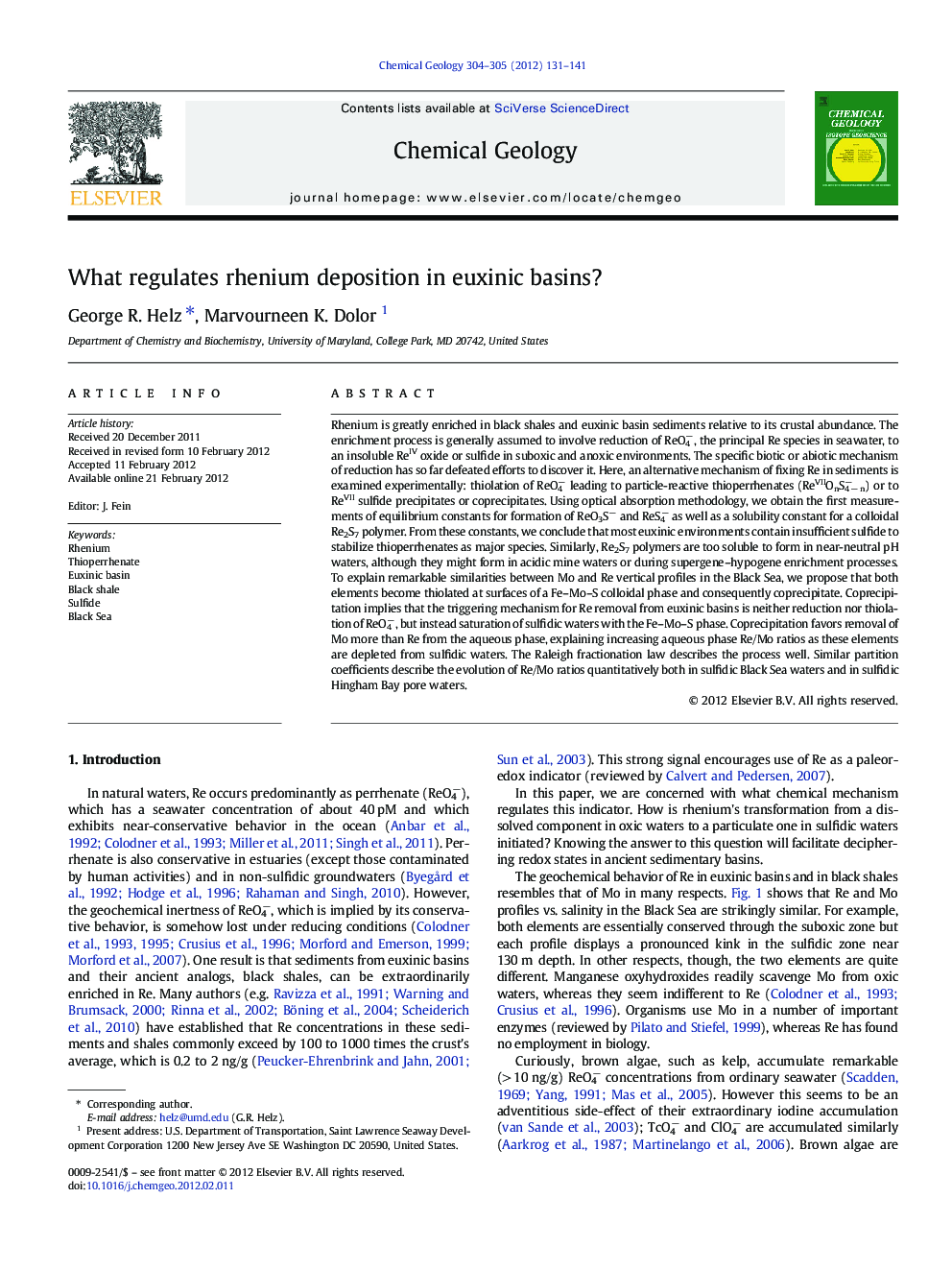| Article ID | Journal | Published Year | Pages | File Type |
|---|---|---|---|---|
| 4699464 | Chemical Geology | 2012 | 11 Pages |
Rhenium is greatly enriched in black shales and euxinic basin sediments relative to its crustal abundance. The enrichment process is generally assumed to involve reduction of ReO4−, the principal Re species in seawater, to an insoluble ReIV oxide or sulfide in suboxic and anoxic environments. The specific biotic or abiotic mechanism of reduction has so far defeated efforts to discover it. Here, an alternative mechanism of fixing Re in sediments is examined experimentally: thiolation of ReO4− leading to particle-reactive thioperrhenates (ReVIIOnS4 − n−) or to ReVII sulfide precipitates or coprecipitates. Using optical absorption methodology, we obtain the first measurements of equilibrium constants for formation of ReO3S− and ReS4− as well as a solubility constant for a colloidal Re2S7 polymer. From these constants, we conclude that most euxinic environments contain insufficient sulfide to stabilize thioperrhenates as major species. Similarly, Re2S7 polymers are too soluble to form in near-neutral pH waters, although they might form in acidic mine waters or during supergene–hypogene enrichment processes. To explain remarkable similarities between Mo and Re vertical profiles in the Black Sea, we propose that both elements become thiolated at surfaces of a Fe–Mo–S colloidal phase and consequently coprecipitate. Coprecipitation implies that the triggering mechanism for Re removal from euxinic basins is neither reduction nor thiolation of ReO4−, but instead saturation of sulfidic waters with the Fe–Mo–S phase. Coprecipitation favors removal of Mo more than Re from the aqueous phase, explaining increasing aqueous phase Re/Mo ratios as these elements are depleted from sulfidic waters. The Raleigh fractionation law describes the process well. Similar partition coefficients describe the evolution of Re/Mo ratios quantitatively both in sulfidic Black Sea waters and in sulfidic Hingham Bay pore waters.
► Whether Re deposition is controlled by thiolation is tested experimentally. ► The first stability constants for thioperrhenates (ReOnS4 − n−) are measured. ► Euxinic waters usually contain too little H2S to thiolate ReO4−(aq) appreciably. ► Both Re and Mo can be thiolated at surfaces of precipitating iron sulfides. ► Fractional coprecipitation with Fe explains Re/Mo evolution in sulfidic waters.
